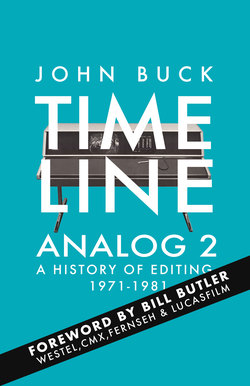Читать книгу Timeline Analog 2 - John Buck - Страница 18
На сайте Литреса книга снята с продажи.
HELICAL - JULY 1971
ОглавлениеAmpex had become involved in many industries but facing large losses it returned to what management believed was its core business, with one glaring oversight as product manager Mark Sanders recalls.
Even though it had invented Helical Scan, the alternative viable recording method to 2” Transverse scan, Ampex hardly bothered with it and virtually ignored the Helical Scan business group that had produced hundreds of thousands of VTRs that were sold to small TV stations, schools, hospitals and other non-broadcast facilities. When Ampex decided to cut costs it folded the Helical scan group, the Pro Audio Division and Pro Video Division divisions together.
Ampex closed the EIPD (Educational and Industrial Product Division) in Chicago that developed and sold helical scan VTR's and created an amalgamated group called the Audio Video Systems Division with a focus on the quadruplex format. Engineer Tom Werner recalls:
I remember being told at Ampex that from an engineering standpoint, there would never be a true broadcast quality helical scan VTR because of mechanically induced timebase errors due to the tape not being supported under the rotating head.
Sanders adds:
We had a small engineering team who was not well respected because they were "helical guys".
Bill Carpenter was one of the ‘helical guys’. He had worked as a design engineer for five years at EIPD’s Elk Grove Village facility until it was shuttered and the team, including Barrett Guisinger, relocated to California.
We started in two old Fairchild Semiconductor Corporation buildings in Mountain View at the corner of Middlefield & Wisman.
Despite receiving positive feedback for the new VPR7950a with its built in TBC and ‘unusually good stability’, Sanders received a blunt directive from Frank Thompson:
He said to me ‘get us out of this business in six months’. I recall talking to a group of the helical video engineers and the irony was the (helical) single scan system with one track per field of video is fundamentally a much better way to go than Quadruplex, if only you could work out a way to keep the video head on track and in turn be more reliable.
Two of the guys said to me, 'there is a way'. More importantly they thought there was a way to ‘recover’ thousands of lost tapes that could no longer be played.
